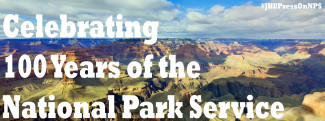
Johns Hopkins UniversityEst. 1876
America’s First Research University
Out of War and Corruption, Beauty: The National Park System Turns 100

In 1916, as the United States prepared to fight World War I, Congress created the National Park Service to administer the growing national park system.
Turbulent times in United States history seem to spur preservation movements: somehow, in 1864, during the Civil War, Congress granted Yosemite to the state of California for protection.
This act set the precedent for preservation that the federal government elevated in 1872 when it settled the fate of what is now called Yellowstone National Park. Visited by only a handful of explorers at the time, word about its beauty spread and private parties attempted to corner the market on the remote outpost.
To save it, a group of conservationists lobbied Congress to conserve the unique preserve. Using the media available at the time – paintings, essays, eyewitness testimonials and photos – they goaded Capitol Hill to create one of the most American and democratic inventions: the national park.
The act designating Yellowstone as a “public park” is one of the most underappreciated events in United States history, an innovation so profound that it inspired governments around the world to preserve their nations’ premier natural sites.
The law saved Yellowstone as an area “hereby reserved and withdrawn from settlement, occupancy, or sale under the laws of the United States, and dedicated and set apart as a public park or pleasuring ground for the benefit and enjoyment of the people” – a magnanimous act in an era of unbridled corruption.
Since that time, the National Park Service has expanded its purview to include national historic sites, national monuments, national battlefields and national historical parks, along with many other designations.
This, of course, includes Fort McHenry National Monument and Historic Shrine, the site that inspired Francis Scott Key to write the poem/song that evolved into the national anthem.
Beyond historic sites, the nation’s incredible natural wonders have always spurred patriotism, especially after the railroads knit the country together from sea to shining sea. When Wellesley College English professor Katherine Lee Bates visited Pike’s Peak in Colorado in 1893, for example, the scene inspired her to compose the poem “America the Beautiful.”
Though splendid, Pike’s Peak never cut the mustard as a national park, affirming that only the most impressive natural treasures (in theory) fall under the aegis of the National Park Service.
Imagine how the lyrics of what is arguably the runner-up for national anthem status might have been had Bates experienced the nearby expanse of peaks that eventually became Rocky Mountain National Park in 1915.
As disdain for politicians reaches historic proportions, it is incredible that Congress, meeting during an unusually corrupt period of this country’s history, created one of the greatest gifts this nation has bestowed to the world.
Marc Ferris earned an M.A. in history from the University of Massachusetts at Amherst. His work has appeared in the New York Times, Newsday, Time Out New York, Spin, Vibe, and elsewhere. He is the author of Star-Spangled Banner: The Unlikely Story of America’s National Anthem.

The National Park Service (NPS) celebrates its centennial anniversary in the month of August! NPS has served as a valuable resource for many of our authors, both professionally and recreationally. To commemorate the occasion, our authors have taken to the blog to pay homage to “America’s best idea”! Check back with us throughout the month of August for more #JHUPressOnNPS! (Series photo credit: Wikimedia)


